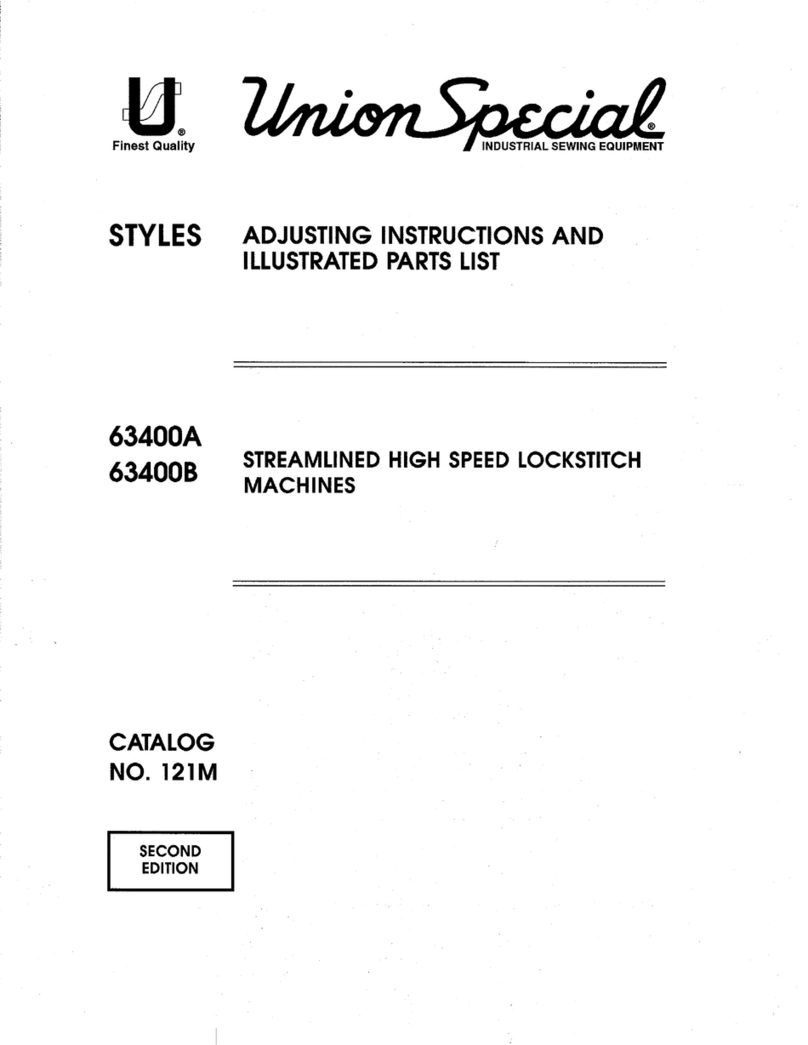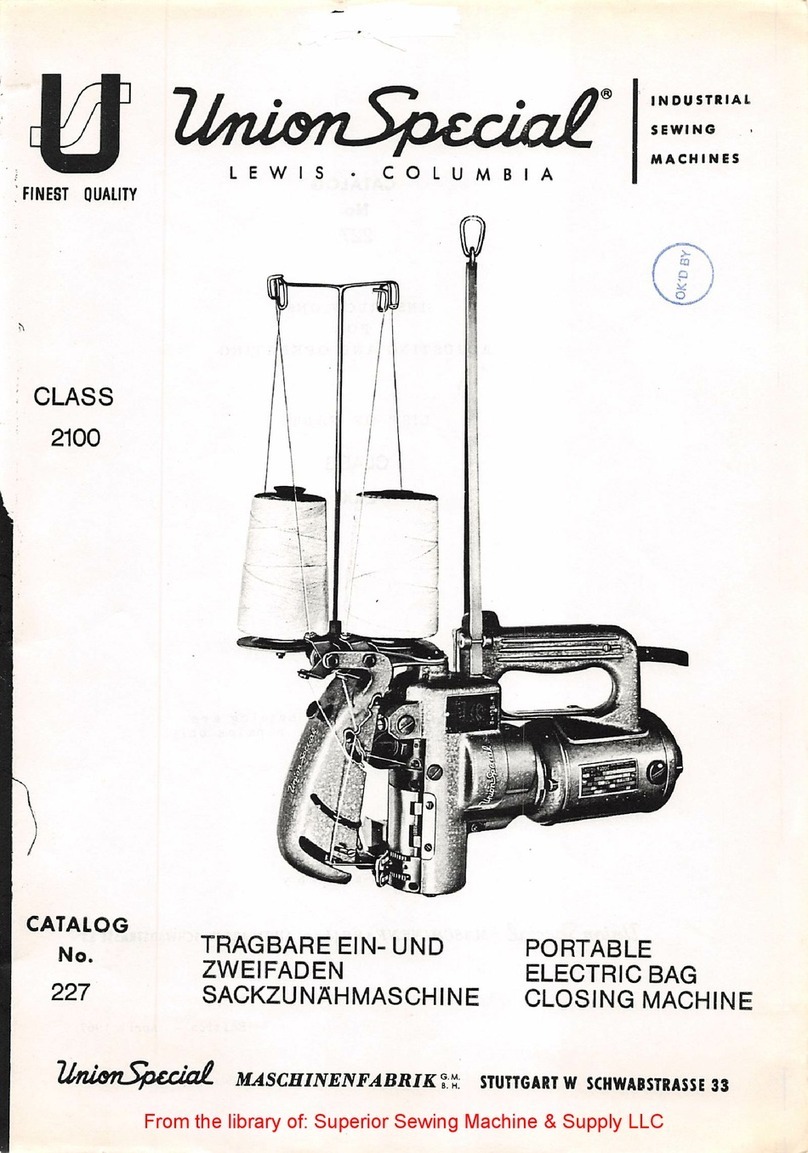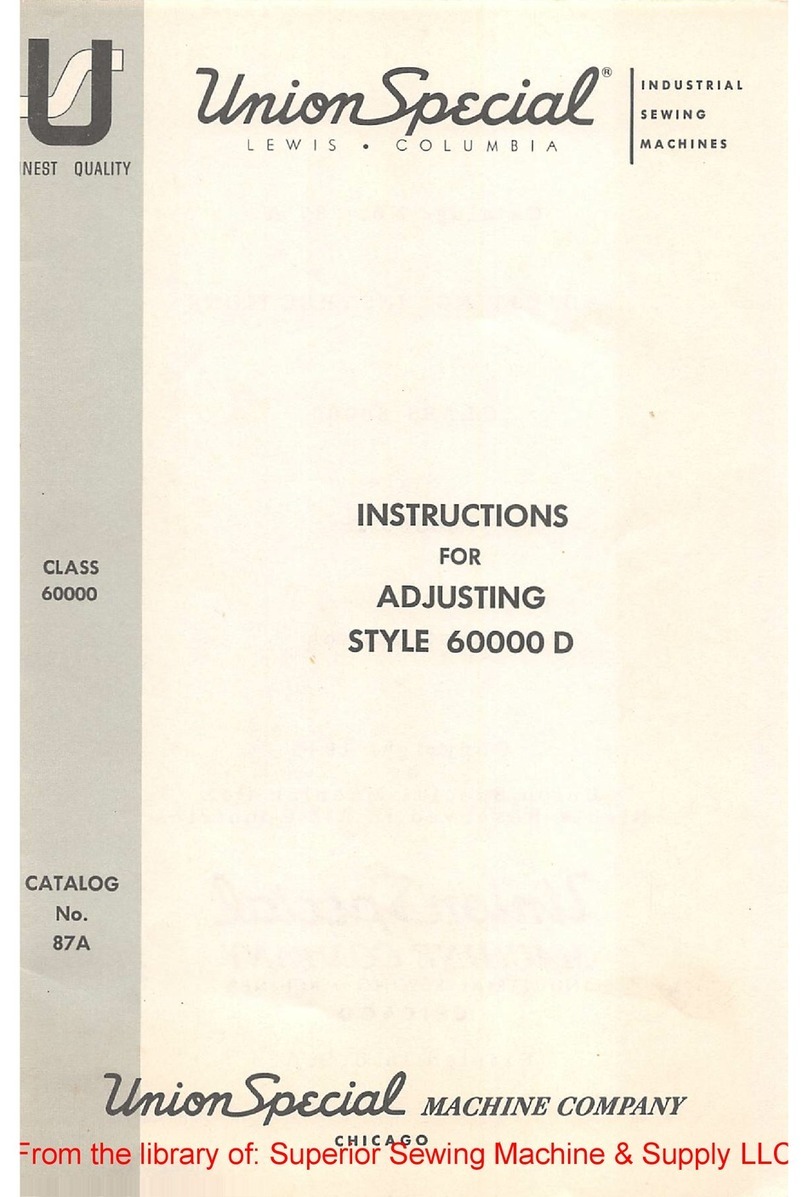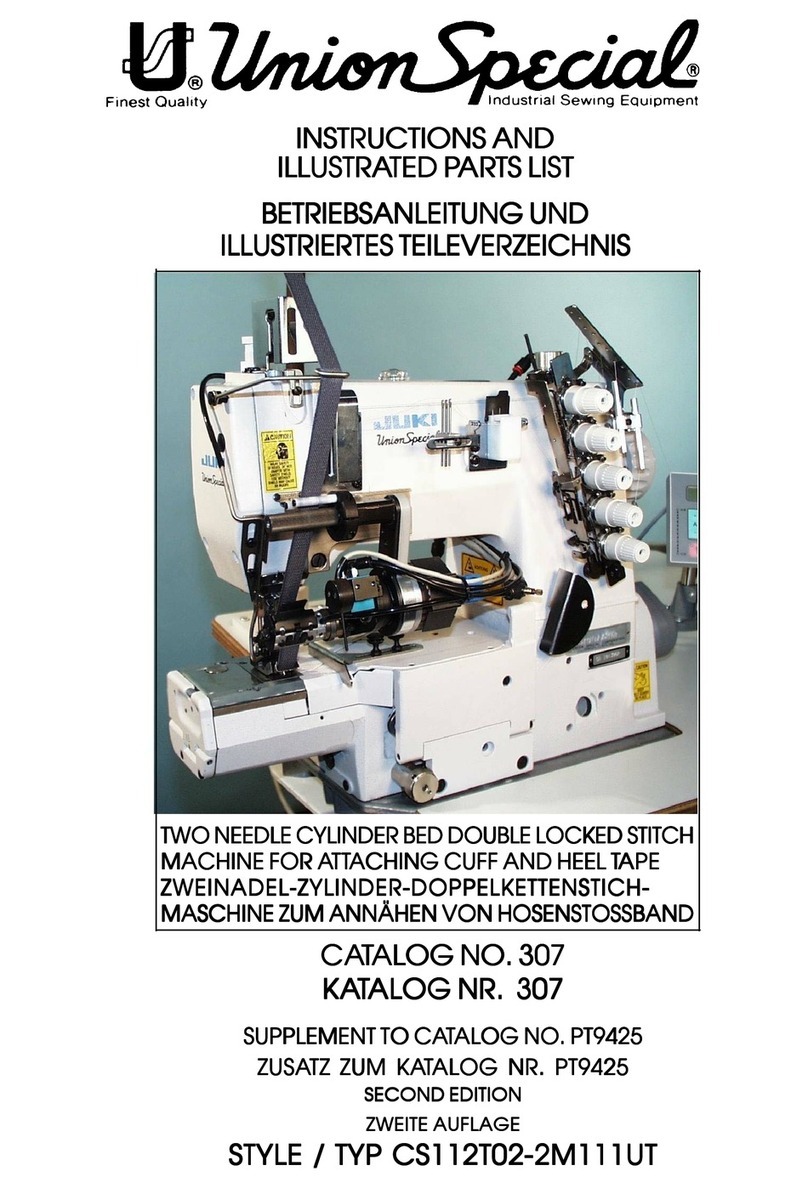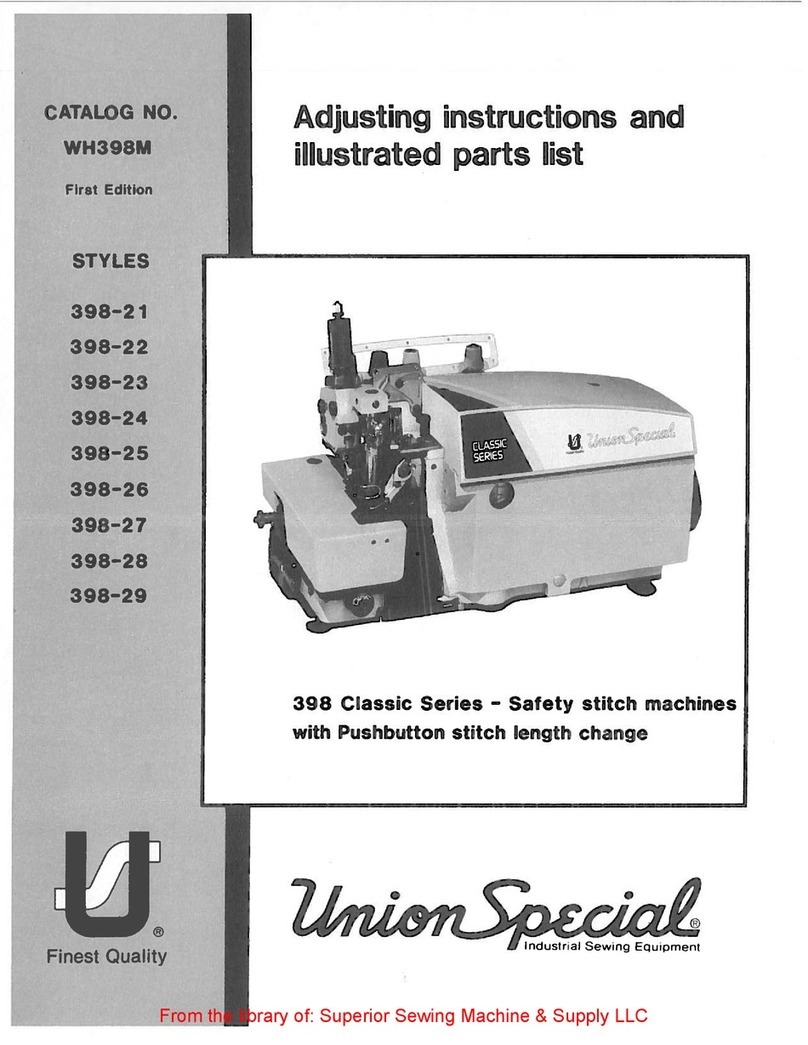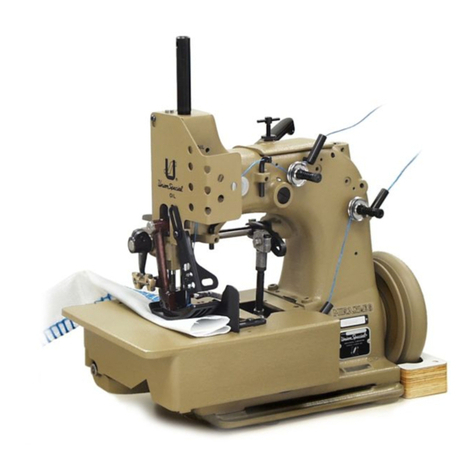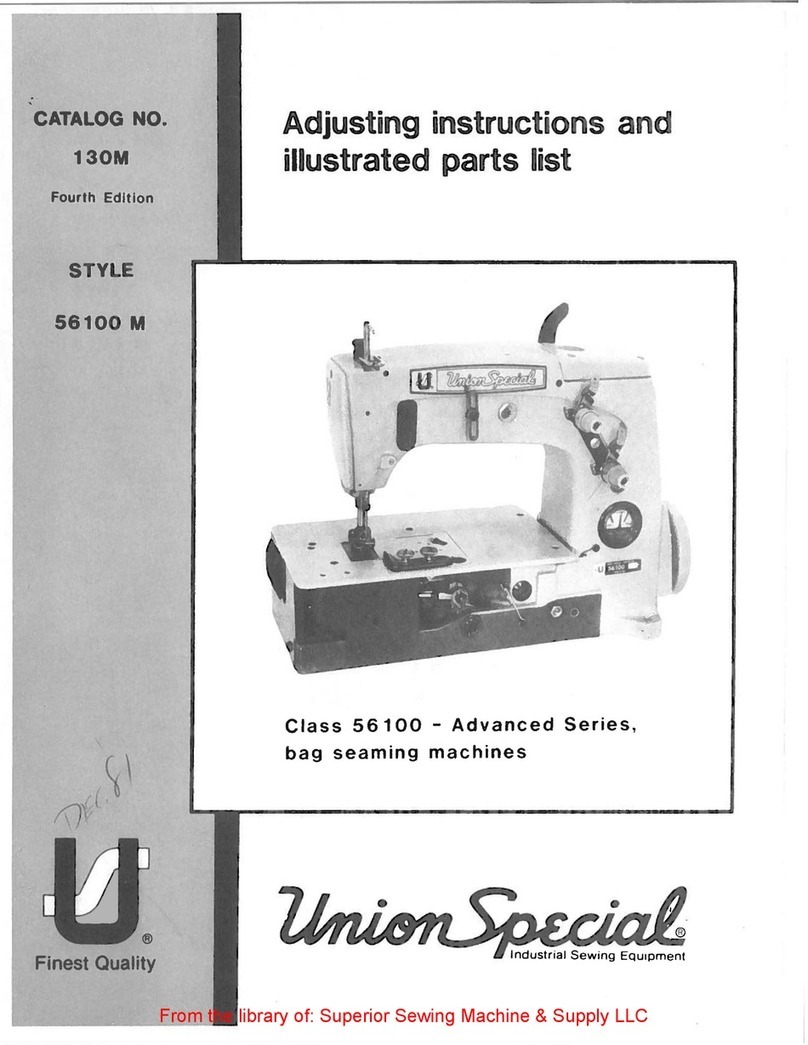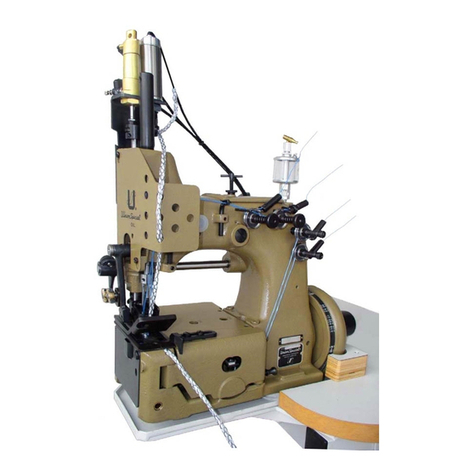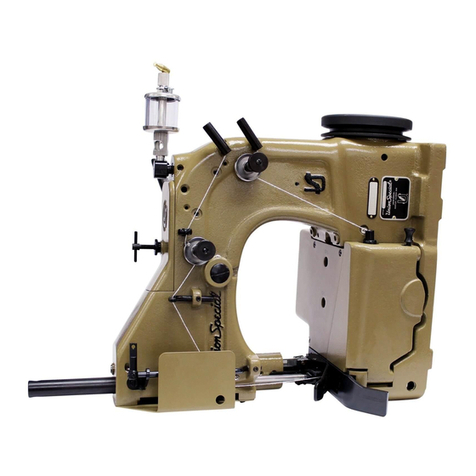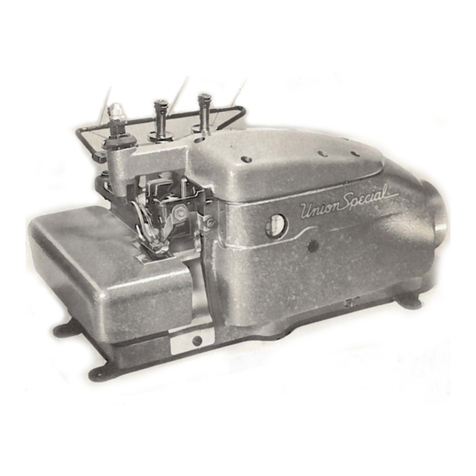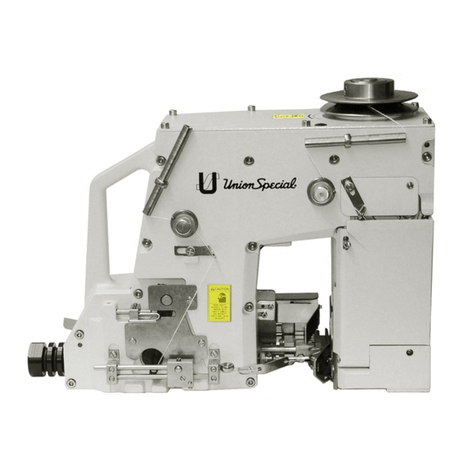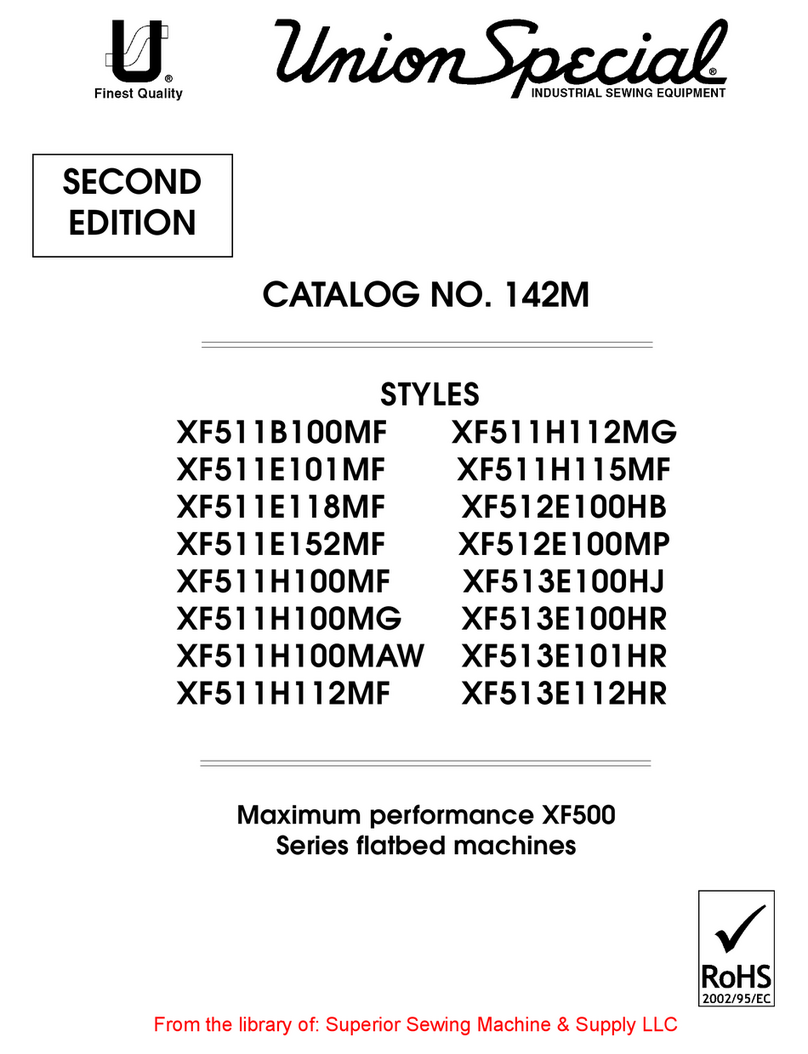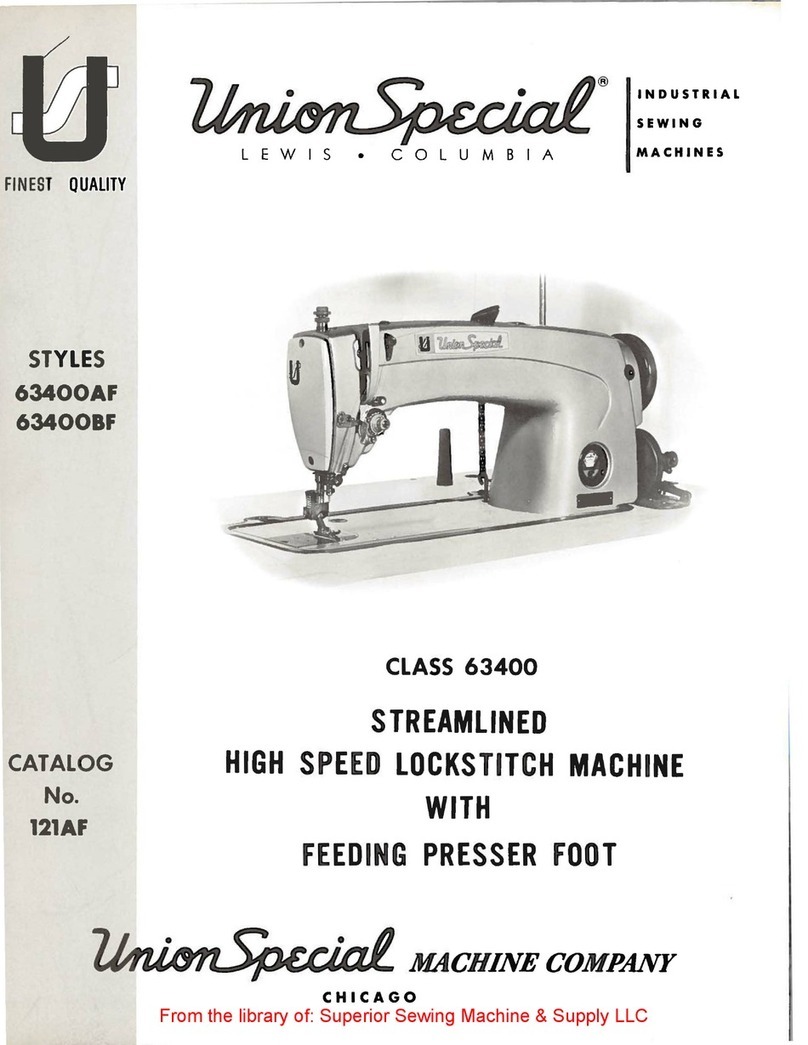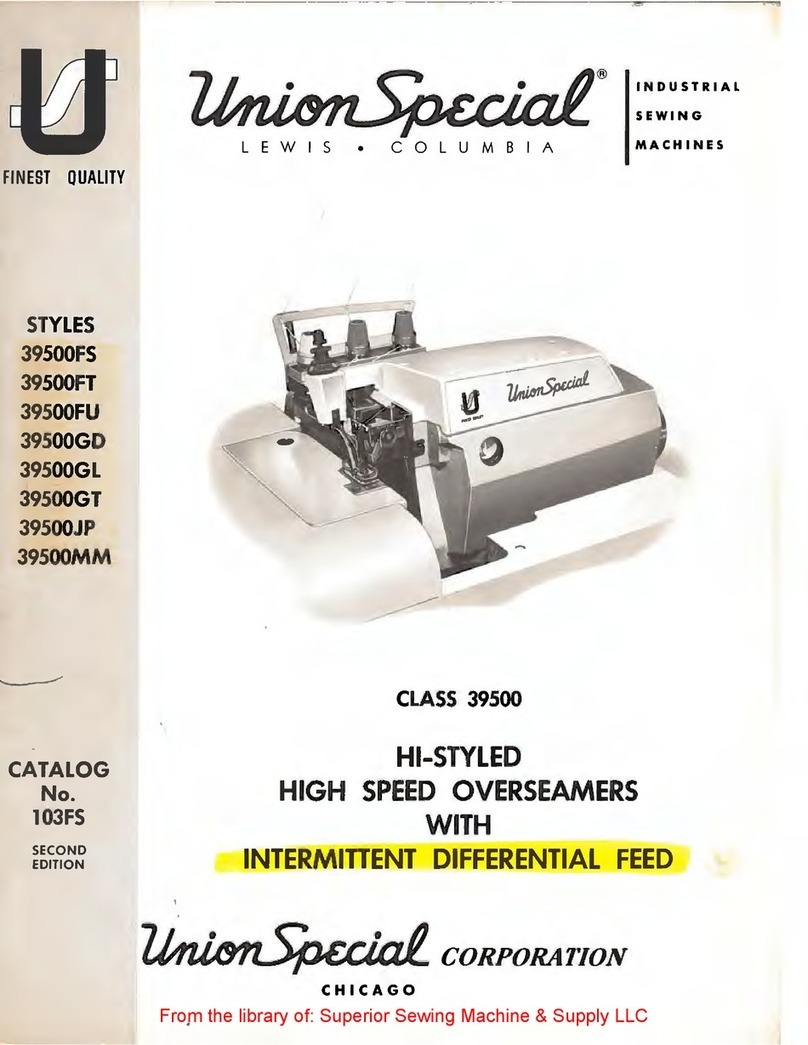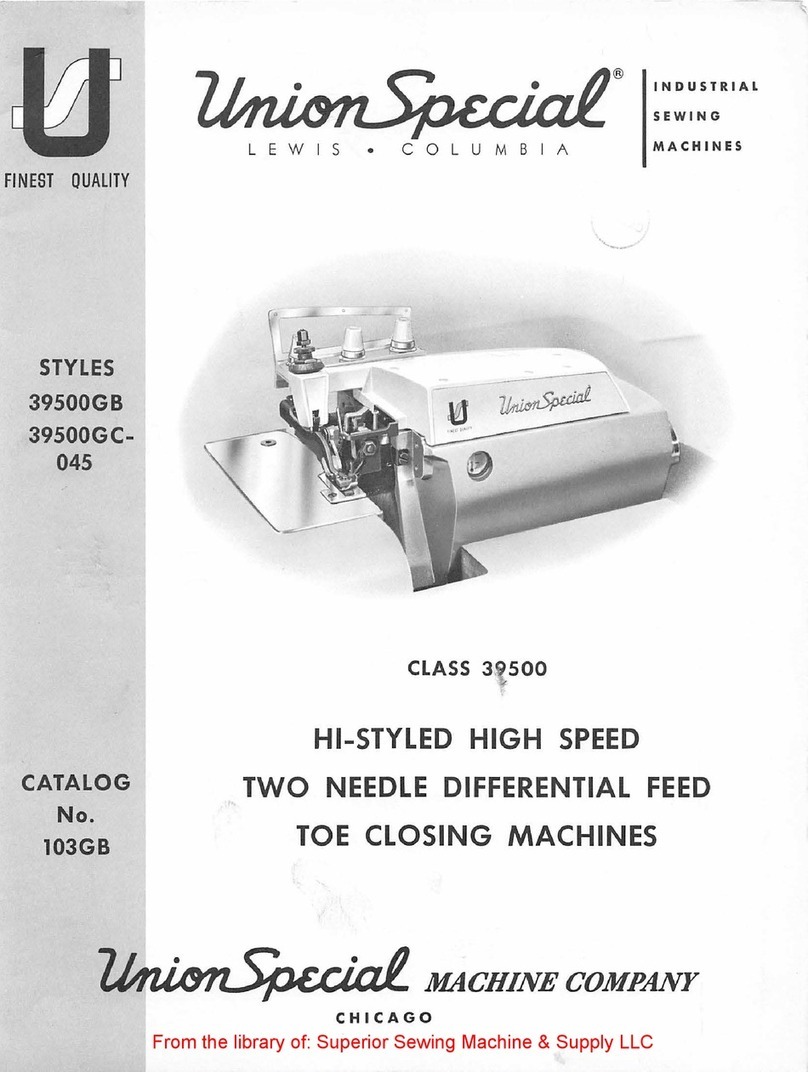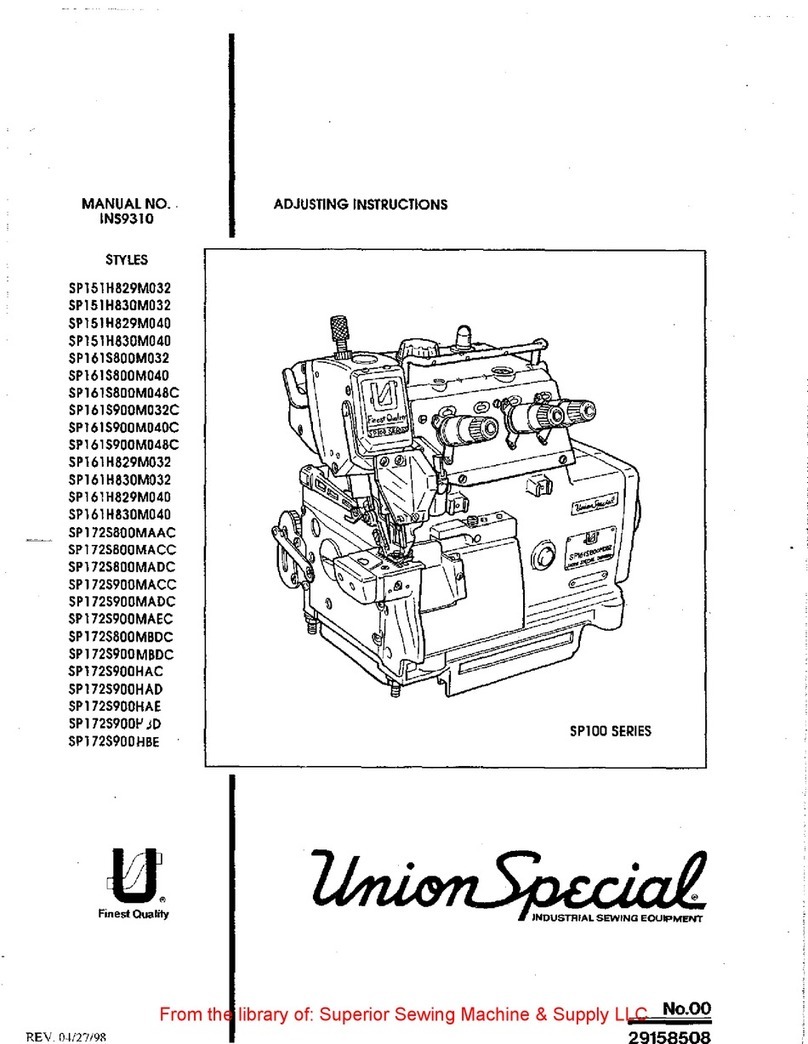
From the library of: Superior Sewing Machine & Supply LLC
IDENTIFICATION
OF
MACHINES
Each
UNION
SPECIAL
machine
is
identified
by a
Style
number which
is
stamped
into
the
name
plate
on
the
machine.
Style
numbers
are
classified
as
standard
and
special.
Standard
Style
numbers
have
one
or
more
letters
suffixed,
but
never
contain
the
letter
"Z".
Example:
"Style
63400 A".
Special
Style
numbers
contain
the
letter
"Z".
When
only
minor
changes
are
made
in
a
standard
machine,
a "Z"
is
suffixed
to
the
Standard
Style
number.Example:
"Style
63400 AZ".
Styles
of
machines
similar
in
construction
are
grouped
under
a
class
number which
differs
from
the
style
number,
in
that
it
contains
no
letters.
Example:
"Class
63400
11
•
APPLICATION
OF
CATALOG
This
catalog
applies
specifically
to
the
Standard
Styles
of
machines
as
listed
herein.
It
can
also
be
applied
with
discretion
to
some
Special
Styles
of
machines
in
this
Class.
Refer-
ence
to
direction,
such
as
right,
left,
front,
back,
etc.,
are
given
from
the
operator's
posi-
tion
while
seated
at
the
machine.
Operating
direction
of
the
handwheel
is
toward
the
operator.
STYLES
OF
MACHINES
High Speed
Streamlined
Long
Arm
Lockstitch
Machines,
One
Needle,
Light,
Medium
and Heavy
Duty,
Drop
Feed,
Rotary
Hook,
Horizontal
Hook
Shaft,
Push
Button
Stitch
Regulator,
Stitch
Length
In-
dicator,
One
Reservoir
Enclosed
Automatic
Lubricating
System, Head
Oil
Siphon,
Adjustable
Hook
Oil
Control,
Automatic
Head
Oiling,
Needle
Bearing
Adjustable
Feed
Eccentric,
Needle
Bearings
for
Take-up
Lever
and
Needle
Bar
Driving
Link,
Feed Timing on Lower Main
Shaft,
Maximum
Work
Space
to
Right
of
Needle
Bar 11
1/8
Inches,
*63400 A
For
miscellaneous
plain
seaming
operations
on
light
and medium
weight
work,
1
9/64
inch
needle
bar
travel.
Type 183
GXS
or
183
GYS
needle.
Specify
presser
foot,
throat
plate,
feed
dog,
stitches
per
inch,
thread
size,
needle
type
and
size,
attachments
and
guides.
63400 B
For
miscellaneous
plain
seaming
operations
on medium and medium
heavy
weight
work,
1
13/64
inch
needle
bar
travel.
Type 180
GXS
or
180
GYS
needle.
Specify
presser
foot,
throat
plate,
feed
dog,
stitches
per
inch,
thread
size,
needle
type
and
size,
attachment
and
guides.
*
DISCONTINUED
-
In
most
instances,
component
parts
can
be
ordered
for
customer
repair.
NEEDLES
Each
needle
has
both
a
type
and
size
number. The
type
number
denotes
the
kind
of
shank,
point,
length,
groove,
finish
and
other
details.
The
size
number, stamped on
the
needle
shank,
denotes
largest
diameter
of
the
blade
measured
across
the
eye.
Collectively,
the
type
number
and
the
size
number
represent
the
complete
symbol.
Needle
Type 180
GXS
or
180
GYS
is
recommended
for
Style
63400
Band
needle
Type 183
GXS
or
183
GYS
is
recommended
for
Style
63400
A.
Their
description
and
the
sizes
available
are
listed
below.
Type
No.
180
GXS
180
GYS
183
GXS
183
GYS
Description
and
Sizes
Round
shank,
round
point,
lockstitch,
short
length,
ball
eye,
single
groove,
wide
angle
groove,
struck
groove,
deep
spot,
ball
point,
chromium
plated
-
sizes
075/029, 080/032, 090/036,
100/040,
110/044, 125/049, 140/054,
150/060.
Round
shank,
round
point,
lockstitch,
short
length,
ball
eye,
single
groove,
wide
angle
groove,
struck
groove,
deep
spot,
chromium
plated
-
sizes
075/029,
080/032,
090/036,
100/040,
110/044,
125/049,
140/054,
150/060.
Round
shank,
round
point,
lockstitch,
extra
short
length,
ball
eye,
single
groove,
wide
angle
groove,
struck
groove,
deep
spot,
ball
point,
chromium
plated
-
sizes
025,
075/029,
080/032,
090/036,
100/040,
110/044.
Round
shank,
round
point,
lockstitch,
extra
short
length,
ball
eye,
single
groove,
wide
angle
groove,
struck
groove,
deep
spot,
chromium
plated
-
sizes
028,
080/032, 090/036,
040,
044.
3
